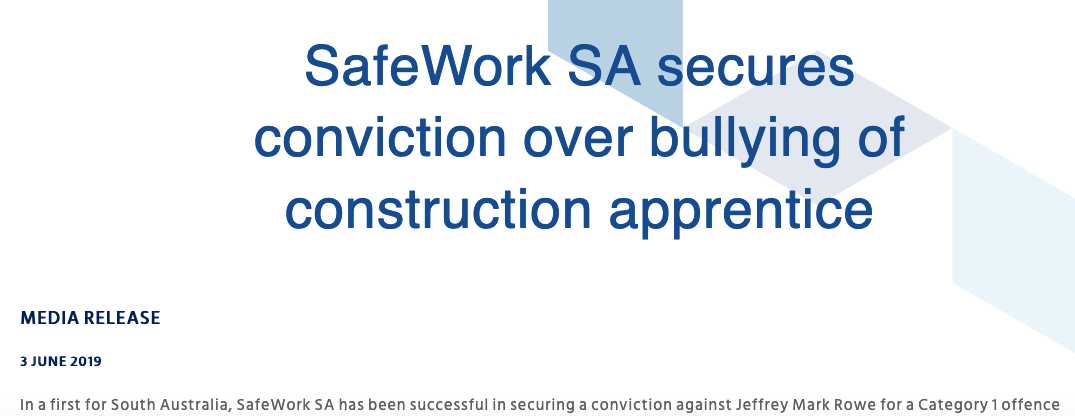In South Australia, a victory of sorts is being claimed for the “first successful bullying prosecution”. The outstanding gaff is that the prosecution isn’t based on bullying and the behaviour referred to is not bullying.
So what does this mean in a world where bullying appears rampant if a key health and safety authority doesn’t get the definition of the bullying right? Is it actually important?
A case of Reckless Conduct
There is no doubt that the incident being reported and successfully prosecuted is horrid and unacceptable workplace behaviour. On 25th March 2017, an apprentice within an electrical business was squirted with a flammable liquid on his shirt and boot, then set alight. It was described as “horseplay which got out of hand”. Fortunately, the apprentice wasn’t seriously injured. The outcome could easily have been much worse.
The matter was heard before the South Australian Employment Tribunal under Reckless Conduct (s.31 Work Health and Safety Act 2011). The supervisor was fined $12000 for his part in the incident.
SafeWork SA tie the case into bullying
In a recent media release, SafeWork SA have tied in the case to bullying. This includes “a clear message to all businesses that the bullying of any worker will not be tolerated” and “include the training of workers in how to manage any instances of bullying”.
Other reports have followed suit “this is the first successful bullying prosecution under the harmonised Work Health and Safety legislation”; or “In a first for South Australia, a supervisor on a construction site was recently convicted and fined for bullying an apprentice who was set on fire.”
Unfortunately, the key issue is that this is not a case of bullying.
What is the definition of bullying?
The Fair Work Act defines a worker to be bullied at work if:
(a) while the worker is at work in a constitutionally-covered business:
(i) an individual; or
(ii) a group of individuals;
repeatedly behaves unreasonably towards the worker, or a group of workers of which the worker is a member; and
(b) that behaviour creates a risk to health and safety.
Consistent with this is the Safe Work Australia guide (ironically referred to from the SafeWork SA site) stating bullying is “repeated and unreasonable behaviour directed towards a worker or a group of workers that creates a risk to health and safety”. Repeated behaviours is defined as “persistent…behaviours over time”.
This case lacks a key characteristic that needs to be present for a situation to be considered bullying; that of repeated behaviour.
It should be noted the South Australian Employment Tribunal does not mention the word bullying in its decision documentation.
What does it mean if a key workplace safety authority cannot get the definition of bullying right?
Unfortunately this was a basic mistake we shouldn’t expect from an organisation that is entrusted to keep employees safe and, where appropriate, prosecute those who who are in breach of the law. A mistake like this can undermine both their authority, decision making and the faith of the general public.
Can they be trusted to successfully prosecute a case for bullying if they are making statements that indicate they don’t even understand the basic definition? This question alone is why it is important that safe work authorities do get the definition right.
However, it also continues the confusion that surrounds bullying in general. There are false claims of bullying that do occur in workplaces, some managers fail to act because of fear they will get labeled a bully, while many simply do not understand what bullying is. Work safe authorities have a significant public presence from advertising campaigns to conference booths to public appearances. When a key message is wrong in such a public way, others are, or continue to be, misinformed.
Without a doubt, it is positive that this was a successful prosecution. This is needed if there will be positive change to prevent dangerous and stupid actions like this in our workplaces. Similar prosecutions are needed in relation to workplace bullying to create safe workplaces, but this can only happen where the basics are right.
There is no doubt that bullying is a complex behaviour pattern. This is a learning opportunity for SafeWork SA and all others going forward as we come together to prevent and manage workpalce bullying.
Do you need support in understanding and resolving your workplace bullying problems?
Contact us today for a free, confidential discussion on how we can help you.

